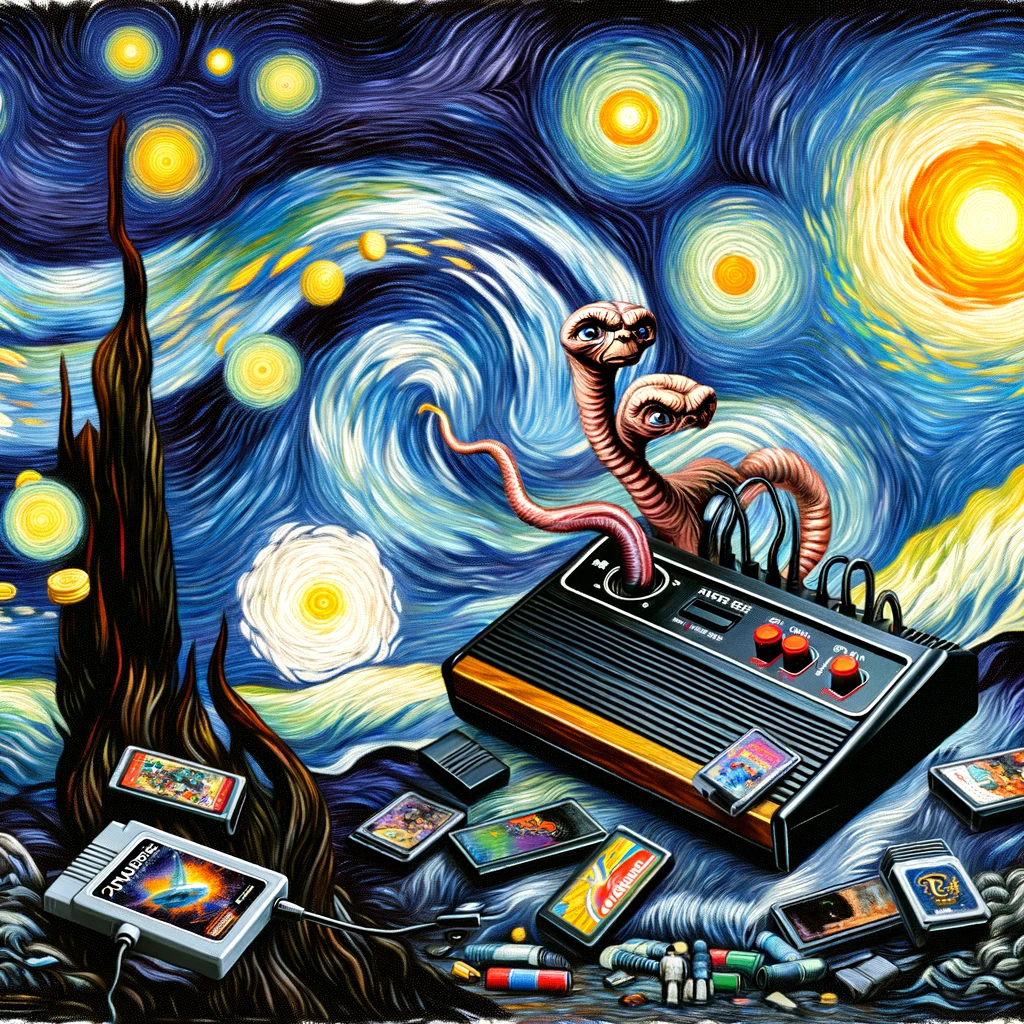| Aspect | Details |
|---|---|
| Market Saturation | Oversupply of games and consoles leading to consumer confusion |
| Competition from Personal Computers | PCs offering more versatility than the Atari 2600 |
| Poor Quality of Games | Release of many low-quality games damaging Atari’s reputation |
| Lack of Innovation | Inability to capitalize on early success and evolve |
| Video Game Crash of 1983 | Industry-wide crash severely impacting Atari financially |
The Atari 2600, an emblem of early video gaming, heralded a new era in interactive entertainment. Launched in the late 1970s, it became a household name, shaping the childhoods of millions and charting a course for future gaming consoles. However, its journey was not without pitfalls. The question “Why Did the Atari 2600 Fail?” opens a window into the complexities of the gaming industry’s early years.
Market Overload: A Recipe for Decline
The late 70s and early 80s saw an explosion in the number of video game consoles and titles. This market saturation led to a paradox of choice for consumers. Amidst a sea of options, distinguishing between high-quality and subpar games became increasingly difficult. The Atari 2600, despite its early success, could not escape this trend. The market overflow diluted the brand’s impact, making it harder for standout titles to gain recognition.
From Gaming to Computing: The Rise of PCs
As the 1980s progressed, personal computers emerged as formidable contenders to traditional gaming consoles. Their multifaceted capabilities extended beyond gaming, offering functionalities like word processing and programming. This versatility was something the Atari 2600 couldn’t match. The allure of PCs, coupled with their rapidly evolving technology, drew many away from dedicated gaming consoles.
The Quality Quandary: Atari’s Achilles’ Heel
Atari’s game library is a tale of extremes. While it boasted iconic titles, it was also marred by a slew of poorly received games. These lackluster offerings not only disappointed gamers but also damaged Atari’s reputation. The release of games like “E.T. the Extra-Terrestrial,” often cited as one of the worst video games ever made, became emblematic of the company’s declining standards. This decline in game quality played a significant role in the platform’s eventual downfall.
The Innovator’s Dilemma: Stagnation and Missed Opportunities
Atari’s failure to innovate and build upon its early success was a critical factor in its decline. Attempts to modernize the Atari 2600, like the “My First Computer” add-on, failed to resonate with the market. As competitors like Nintendo entered the fray with more advanced gaming systems, Atari struggled to keep pace. This lack of innovation and adaptation led to a gradual erosion of Atari’s market share.
The 1983 Video Game Crash: An Industry’s Nightmare
The video game crash of 1983, a catastrophic event in gaming history, significantly impacted Atari. This industry-wide crash, triggered by an oversaturated market and the prevalence of low-quality games, saw the collapse of many gaming companies. Atari, a major player in the market, suffered huge financial losses. The crash marked a turning point, not just for Atari but for the entire gaming industry.
Navigating the Retro Gaming World: Learning from Atari
The rise and fall of the Atari 2600 provide valuable lessons for the gaming industry. Understanding the factors that led to its decline is crucial for both gaming enthusiasts and developers. For those interested in the evolution of gaming, exploring the benefits of emulation offers insights into preserving gaming history. Additionally, understanding why retro games look the way they do can enhance appreciation for these classic titles and the platforms that supported them.
Atari’s Financial Turmoil
The impact on Atari was catastrophic. They faced massive financial losses, particularly after the E.T. debacle. The company, which had been at the top of the gaming world, found itself struggling to survive. This downturn not only affected Atari but also sent shockwaves throughout the industry.
Atari’s Role in the Market Collapse
Atari’s rapid expansion and subsequent overproduction played a significant role in the market’s collapse. The glut of unsold Atari cartridges and consoles contributed to a loss of consumer confidence, leading to a sharp decline in sales across the industry.
The Aftermath and Recovery
Post-crash, Atari struggled to regain its footing. While they continued to produce games and consoles, they never recaptured their former glory. However, the crash also paved the way for the industry’s restructuring. New players like Nintendo entered the market, emphasizing quality control and reviving the industry.
